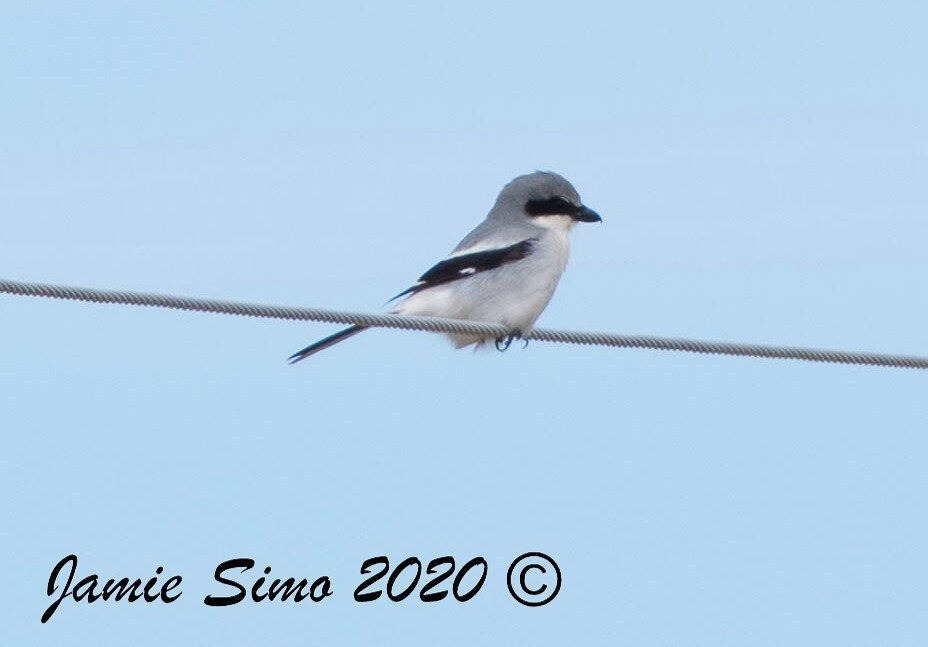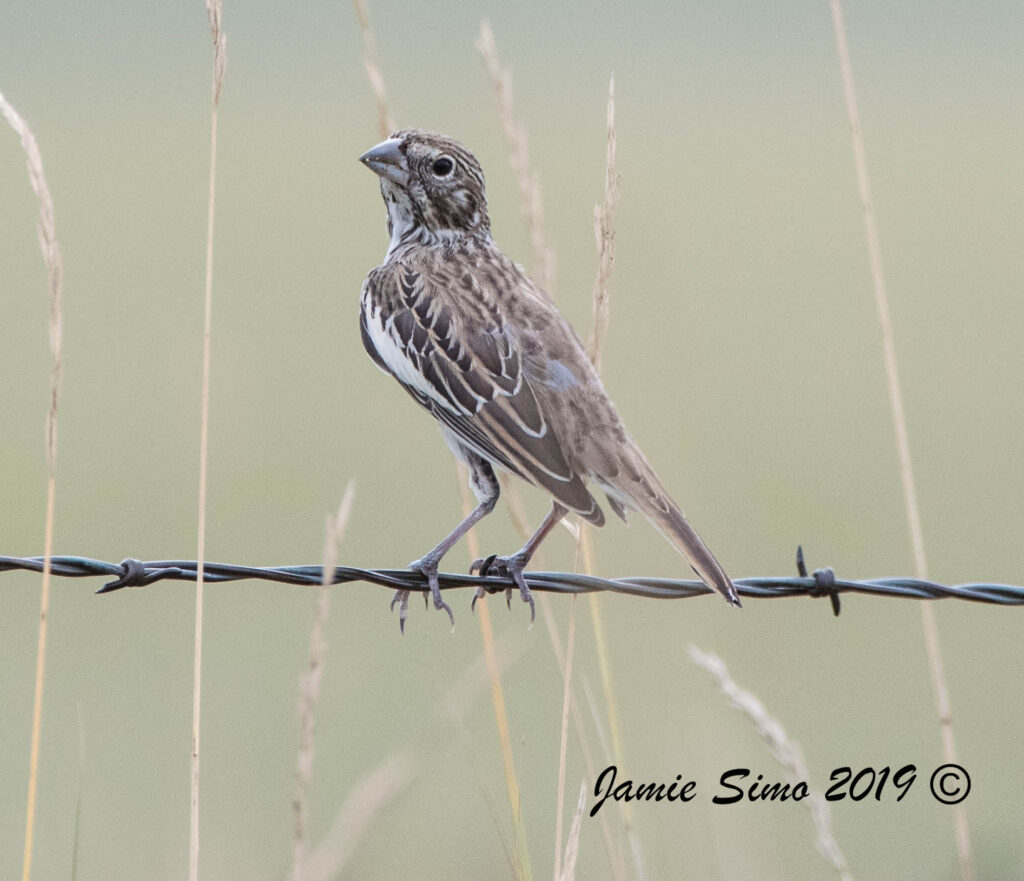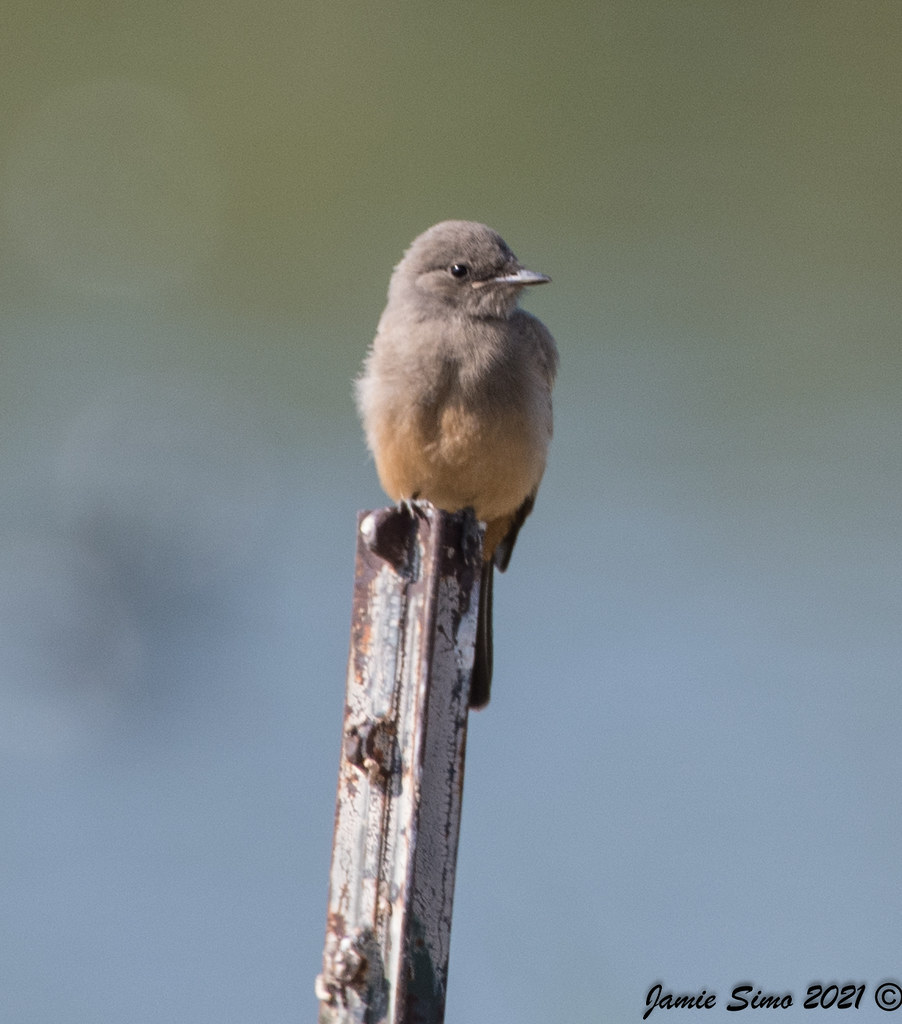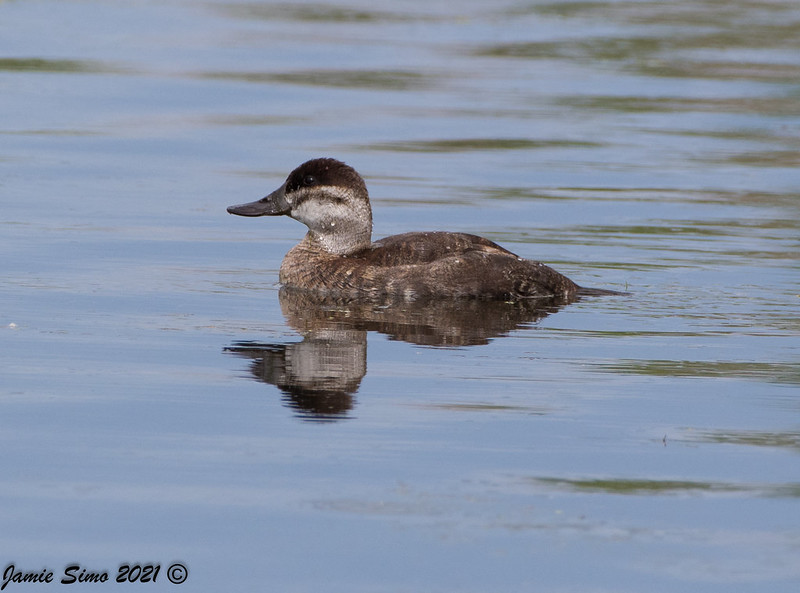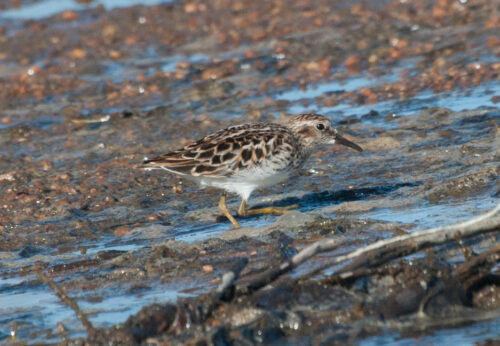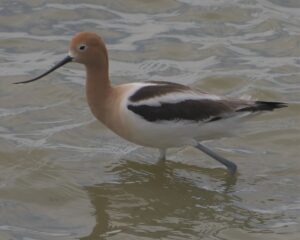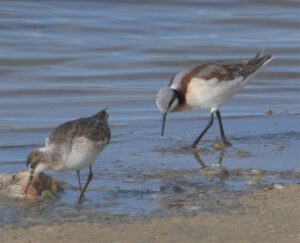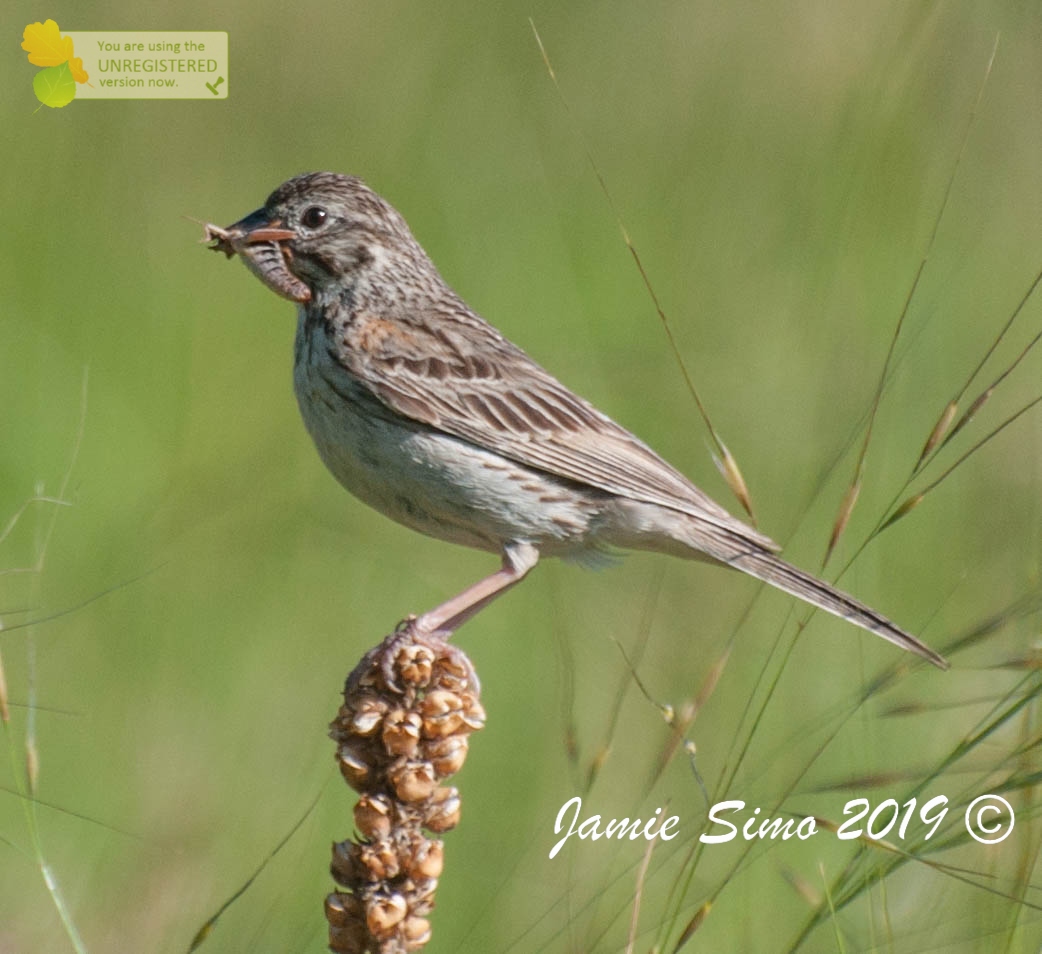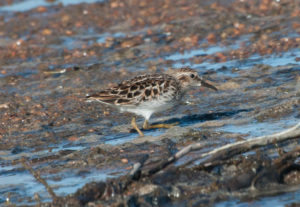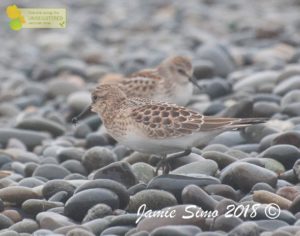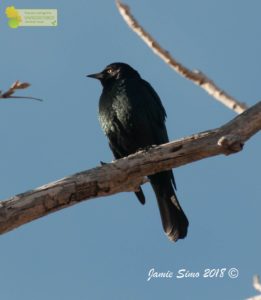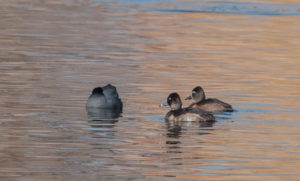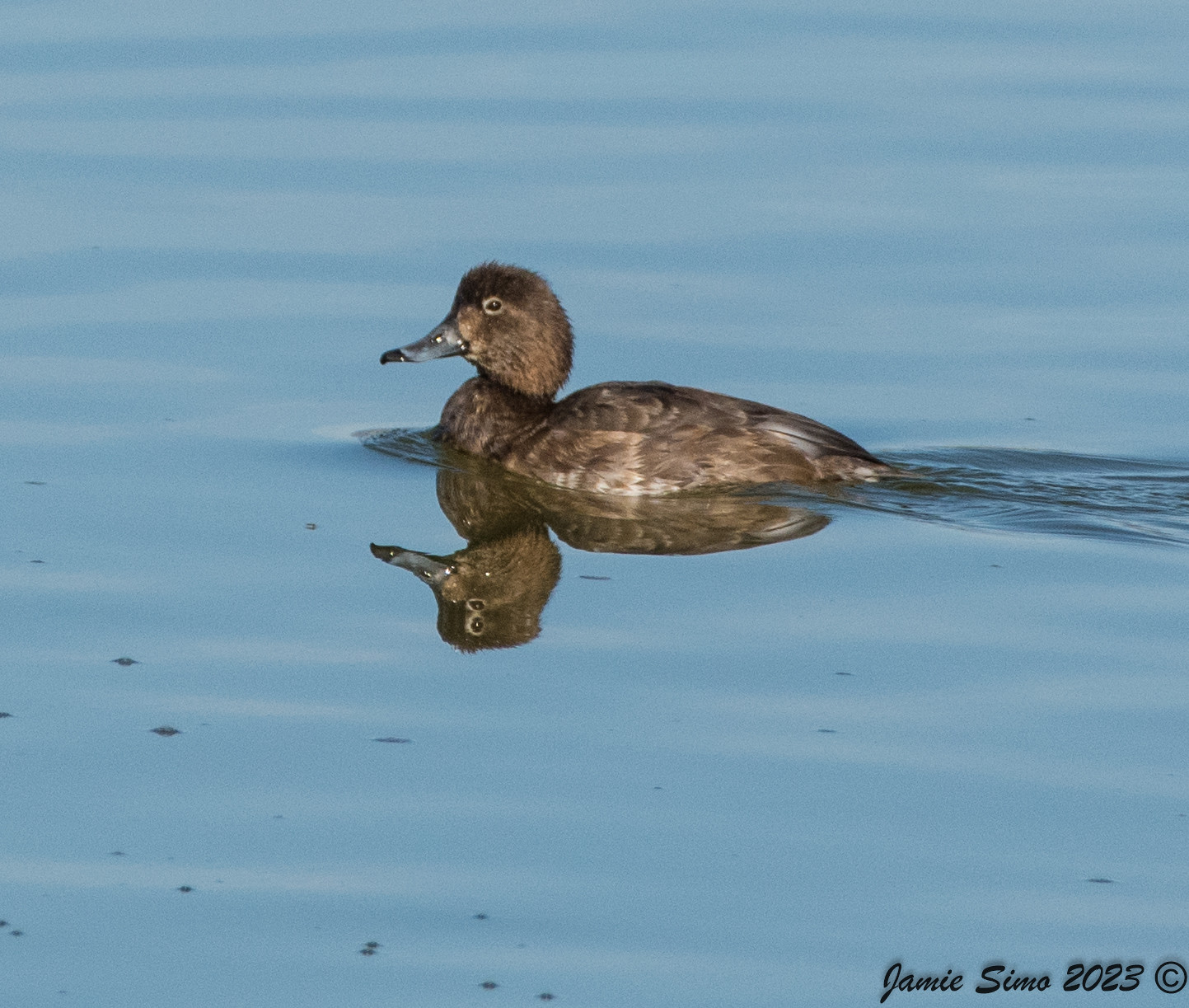
On a perfect Saturday morning (we even had an eclipse to enjoy!) we set out on a leisurely walk around Lagerman Reservoir to see what birds we could see. Lagerman is usually busy all year, but particularly shines in fall and winter when waterfowl and raptors are the highlights. Right away we spotted a juvenile light-morph Ferruginous Hawk that had staked a claim on a power pole overlooking the nearby prairie dog colony.
Ferruginous Hawks, named for the rusty or “ferrous” (iron) color of the feathers on their legs and backs, are our largest hawk and primarily feed on prairie dogs. Juvenile light-morphs are less rusty than their adult counterparts with more spotting on their underparts.
We were also treated to several other raptors out hunting, including a couple of adult Bald Eagles, an American Kestrel, and a Northern Harrier. The Northern Harrier is the only bird of its genus, Circus, in North America. They breed and hunt in grasslands and marshes where they use their disc-shaped faces to locate rodents. The disc shape helps funnel sound to their ears, a characteristic they share with owls, though they aren’t closely-related.
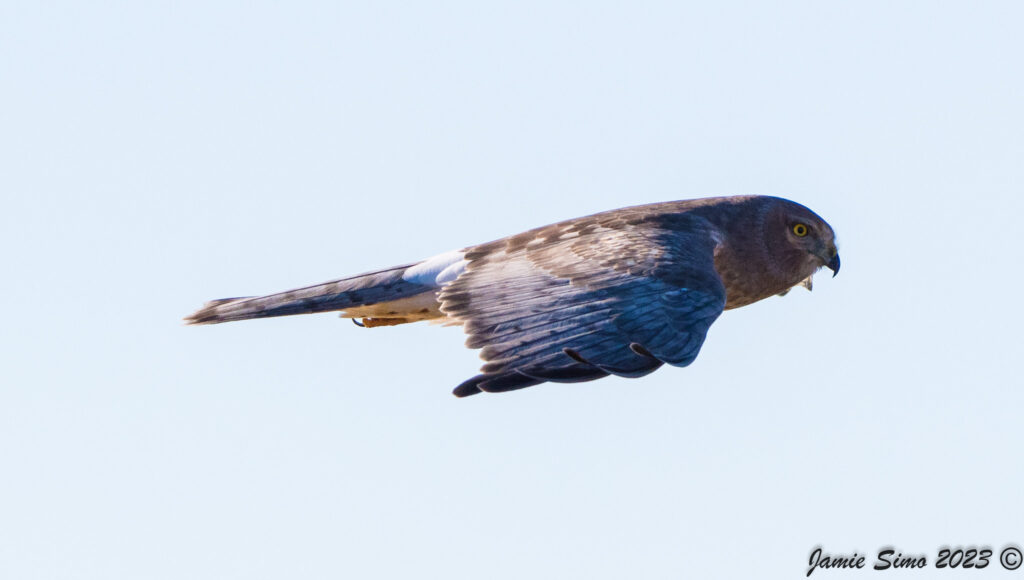
In addition to raptors, we had an abundance of waterfowl on Saturday. Of particular note were several Eared Grebes, the only grebe species we encountered. In winter, Eared Grebes are mostly varying shades of grey, retaining only the red eyes from their spectacular breeding plumage. They often are easily confused with Horned Grebes, with several minor differences. While Horned Grebes have bright white cheeks, Eared Grebes’ cheeks are a dusky color that doesn’t stand out from the color of their faces or necks. A good mnemonic to remember this characteristic is Eared=smeared. Also, while Horned Grebes’ heads are squarish, Eared Grebes have somewhat lumpy heads with a peak toward the front of the head.

We were also treated to great looks at many ducks including, but not limited to, Northern Pintail, Redhead, Canvasback, and American Wigeon. A very successful walk!
Lagerman Agricultural Preserve–Lagerman Reservoir, Boulder, Colorado, US
36 species
Canada Goose 26
Northern Shoveler 7
Gadwall 2
American Wigeon 15
Mallard 12
Northern Pintail 6
Green-winged Teal 8
Canvasback 5
Redhead 20
Ring-necked Duck 4
Bufflehead 5
Ruddy Duck 50
Eared Grebe 6
Rock Pigeon (Feral Pigeon) 13
American Coot 80
Killdeer 10
Least Sandpiper 1
Wilson’s Snipe 2
Ring-billed Gull 6
American White Pelican 2
Northern Harrier 1
Bald Eagle 2
Red-tailed Hawk 1
Ferruginous Hawk 1
Northern Flicker 2
American Kestrel 2
Say’s Phoebe 1
Black-billed Magpie 1
American Crow 2
European Starling 50
American Robin 1
American Pipit 12
White-crowned Sparrow 1
Western Meadowlark 12
Red-winged Blackbird 10
Brewer’s Blackbird 8


